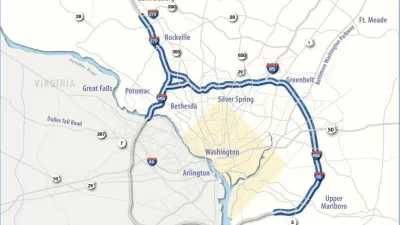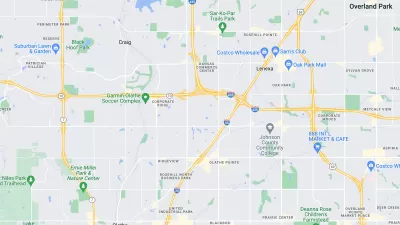An examination of the proposed plan for the West Bay Parkway in Florida reveals many holes, a wasteful project, and the need for more accountability in transportation planning.
Kevin DeGood provides an installment in the "White Elephant Watch" series, which highlights unnecessary transportation infrastructure projects—in this case, the West Bay Parkway in Bay County, Florida. "The project has an estimated cost of $566 million," writes DeGood. Yet, "[g]iven its location, the proposed parkway will not serve as an effective alternative route for travelers on U.S. Route 98. Moreover, alternative investments in things such as public transportation would provide far greater congestion relief at a much lower cost."
The article breaks down each of these points. For instance, DeGood debunks the claim by the Florida Department of Transportation (FDOT) that "the West Bay Parkway will reduce congestion along U.S. 98 by siphoning off substantial traffic in the future" by citing the target roadway level of service (LOS):
"As mentioned, approximately half of the proposed parkway would consist of widening CR 388 from a two-lane highway to a four-lane divided highway. If this corridor were actually an attractive or realistic alternative to U.S. 98 for area drivers, then traffic modeling would show serious congestion problems along CR 388 in future years without the widening. However, when FDOT projected out to 2035, it found that “CR 388 was not among the roads listed as failing to meet the LOS standard,” meaning that even with travel demand assumptions—pegged at 4.78 percent annually—that outstrip population growth, CR 388 still performed perfectly well without the parkway expansion. In short, CR 388 is not an effective alternative to U.S. 98 for what little through traffic the area generates—nor does it produce much local traffic."
Other exceptions DeGood takes with the proposed plan include overly ambitious population growth targets and a lack of feasibility for the tolling option for financing the project.
All in all, according to the article, the project is a perfect example of the types of products yielded by a funding system—from federal down to the state level—that requires no accountability in transportation planning.
FULL STORY: White Elephant Watch: Vol. 2

Planetizen Federal Action Tracker
A weekly monitor of how Trump’s orders and actions are impacting planners and planning in America.

Congressman Proposes Bill to Rename DC Metro “Trump Train”
The Make Autorail Great Again Act would withhold federal funding to the system until the Washington Metropolitan Area Transit Authority (WMATA), rebrands as the Washington Metropolitan Authority for Greater Access (WMAGA).

DARTSpace Platform Streamlines Dallas TOD Application Process
The Dallas transit agency hopes a shorter permitting timeline will boost transit-oriented development around rail stations.

Parks: Essential Community Infrastructure — and a Smart Investment
Even during times of budget constraint, continued investment in parks is critical, as they provide proven benefits to public health, safety, climate resilience, and community well-being — particularly for under-resourced communities.

Porches, Pets, and the People We Grow Old With
Neighborhood connections and animal companions matter to aging with dignity, and how we build can support them. Here’s a human-scale proposal for aging in place.

Single-Stair Design Contest Envisions Human-Scale Buildings
Single-stair building construction is having a resurgence in the United States, where, for the last several decades, zoning codes have required more than one staircase in multi-story housing developments.
Urban Design for Planners 1: Software Tools
This six-course series explores essential urban design concepts using open source software and equips planners with the tools they need to participate fully in the urban design process.
Planning for Universal Design
Learn the tools for implementing Universal Design in planning regulations.
City of Charlotte
Municipality of Princeton
City of Camden Redevelopment Agency
City of Astoria
Transportation Research & Education Center (TREC) at Portland State University
US High Speed Rail Association
City of Camden Redevelopment Agency
Municipality of Princeton (NJ)




























